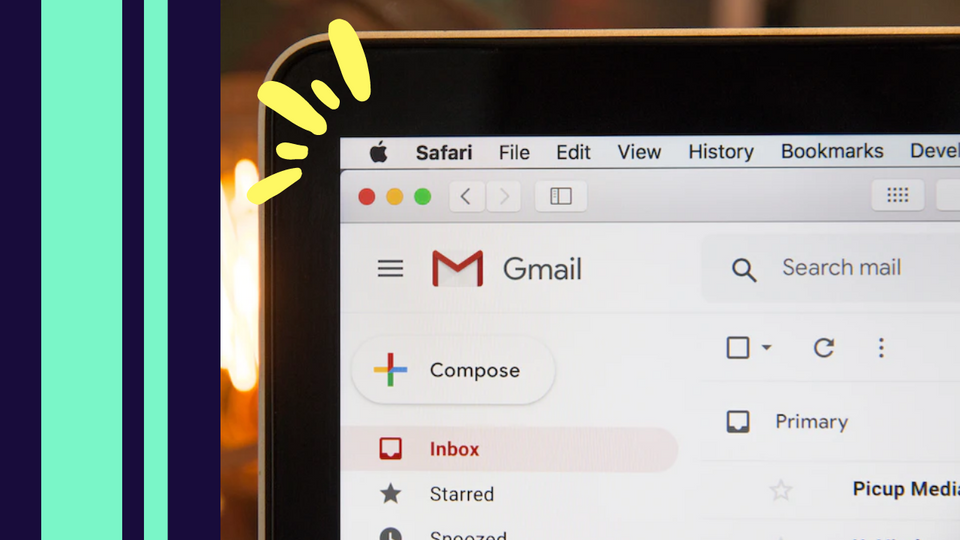What you’ll learn
Do people read eBooks? Can they help your business garner more sales and buzz? Only if you know how to use eBooks for marketing. Otherwise, you’re on a soapbox, and no one’s listening. Yikes.
But why focus on eBook marketing, anyway?
An eBook shows your customers you’re an expert who can help them solve their problems.
And the statistics support this: guess how many eBooks sold in the U.S. last year? 191 million generating a whopping 1.1 billion.
And that’s not counting self-published or free eBooks, which can be amazing at generating contacts and subscribers you can market and remarket to.
As much as everyone loves the myth that we’ve all got the short attention spans of goldfish, we also really, really love to learn about things that fire us up.
And that’s why you should take the time to learn how to use eBooks for marketing. Because if you can capture interest while helping your audience achieve something, you’ll keep their attention for much longer than eight seconds.
This will stop them from swimming over to your competitors. In fact, they may even become loyal customers. At the very least, they’ll keep consuming your content, which shows search engines you’re an authority.
A piece of content that satisfies search engines and your customers? Perfect.
Here at Lyon Content, we’ve helped our clients build authority and boost revenue with thought-leadership eBook copywriting, and we’ve learned the best formula for results.
Ready to learn how to write an eBook and make money so you can dominate your online niche?
How to Use Ebooks for Marketing: 7 Steps, start to finish
But wait… How hard is it to write an eBook? Where do you start? What content should go into the eBook and its chapters? What are the 7 steps to create an eBook that mesmerizes your audience? We’ve got you covered. Keep reading.
Step 1: Study your customers
Let’s get the creative juices flowing. But first, make sure you understand your customers and target audience’s needs.
Fast forward a bit for a moment. You’ve spent precious time, resources, and let’s face it: blood, sweat, and tears composing a delectable eBook. Copy on point, visuals on fleek — it’s ready to go.
Now, you might have the most informed, accurate, branded, engaging, and unique eBook in the world — but none of that matters if your customers don’t want it.
That’s why you need to know 100% what they do want. Deloitte already tells us customer-centric companies make 60% more money than companies that don’t put in the work to know or please their customers.
First class in how-do-you-monetize-an-eBook 101: research your audience, first.
Chances are, you’ve already done some legwork in figuring out what your customers want. But if you haven’t, there are a few ways to gather this crucial info and create customer personas that will inform your content.
- Conduct customer surveys
- Run some ads on socials like Facebook and Instagram
- Track traffic and marketing analytics
Here’s what you need to know as a baseline:
- Demographics
- Age
- Location
- Hobbies/interests
- Shopping patterns
But for an eBook, you’ll need to dive deeper.

Step 2: Use audience data to inform topics
You’ll use your eBook to talk predominantly to a specific type of customer — known visitors.
Content marketing experts at BrightSpot break it down for us. Known visitors are:
“…Familiar audiences who already have a baseline understanding of your company and are willing to spend more time engaging with your content.”
This customer needs an eBook. This is your chance to plume your feathers with your expertise and opinion about an industry subject or niche topic. Your readers already know what you’re about and want to dive deeper.
But on what, exactly?
Find out what topics to write about by:
- Surveying them about the type of content they’d like to learn about.
- Learning their education and experience in your industry (Audience personas).
- Engaging with them on social media comments and DMs to hear more about their lives and desired solutions.
Let’s say your company sells collagen supplements and your customers get in touch asking about how effective it is for sagging skin. They might also want to know how bone broth compares.
In this case, you could write an eBook about all the natural solutions for youthful skin: bone broth, collagen, gelatin, and more. Your customers will respect your transparency and appreciate your insights. Because you’re not just selling your product, you’re covering the topic comprehensively. By giving them all the info, they can make an educated purchase.
eBooks are thought leadership content that highlight your expertise in your entire industry, not just about your product.
This means you can 100% write an eBook about related solutions, too. Chances are, some of your readers are going to convert because they were already seeking collagen supplements as a solution, and your expertise swayed them your way.
But it’s not just about the sales. You’ve showcased your knowledge, which is as valuable as gold in digital marketing, because you may start receiving backlinks to your eBook, press mentions, and more.
Open a fresh doc and start jotting down some ideas for topics. When in doubt, consider your FAQs. What questions keep coming up from customers? Those can become fleshed out eBooks!
Need help coming up with topics? We’ve got you covered.
Step 3: Create your eBook: What goes into it?
You’ve done the legwork to come up with juicy, informative topics. Now it’s time to figure out how to best write about them.
What are some eBook writing best practices?
Exceptional eBook writing
Next you’ll want to know how to write an eBook.
Your readers want to understand and engage with your content. Long-winded sentences, jargon, and vague language will bore, or worse, confuse them. Make your writing easy to read, bite-sized, and engaging.
You’ll also want to consider the tone, which is the emotion or feeling your copy conveys. What emotional tone should your copy have? If you’re writing about starting a business, it should be empowering and upbeat. If you’re writing about grief, the tone should be compassionate and empathetic.
Coming across as tone-deaf in your eBook writing is a surefire way to lose respect and credibility.
Go back to your audience personas and let them inform your tone.
Check out this example from our client’s hair loss eBook:
Notice how the tone is gentle, relatable, and empathetic? By understanding our client’s customers’ struggles, we were able to craft the most compassionate language. The tone stands in solidarity while educating them about their hair loss.
There are some great tools to help keep your writing concise and grammatically flawless, including Hemingway App and Grammarly.
But when it comes to perfecting the tone and brand messaging that goes into flawless eBook writing, you’ll need a finely skilled hand. If you’re struggling to nail your brand’s tone, reach out to us. We’ll make sure it lands flawlessly with your audience. Every. Damn. time.
Compelling visuals
Text-only eBooks can read as boring and lose your readers’ attention quickly. Quality visuals like high-resolution photos, infographics, and design elements will enhance your messaging while reinforcing your branding.
Break up chapters and sections with stunning visuals that naturally please the eye and offer readers an enjoyable user experience. That way they’ll devour every word and not dip out after the first chapter.
Subtly include promotional elements
An eBook is a tricky yet necessary place for promotional elements. You should find ways to connect your reader with your brand first and foremost. This is not the place for in your face sales content.
Instead, use subtle internal links without directly asking them to look at your product. Linking to additional content is another great way to keep them at the top of the funnel without forcing them to a product or sales page. And while you may not be directly making sales immediately, you’re building that rich authority we keep talking about.
If you’re going to include a product mention, be sure it’s branded with your company’s colors, fonts, and signature design features, like this great example from Daniel Alain:
Make your content one-of-a-kind
How do you create an eBook for marketing that shines amidst a sea of other content? Look for ways to differentiate your content and make it unique. Your eBook should offer value and be worth your customers’ time. Show them why you’re a credible source to discuss this topic and entertain them at the same time.
There are many ways to do this, including:
- Incorporate the latest facts and statistics from market research
- Include quotes and insights from your founder
- Create custom infographics
- Cover topics more comprehensively – don’t skimp through chapters
- Write completely authentic content rooted in your expertise and research (don’t regurgitate already published information)
- Entertain them with clever or highly relatable witticisms, kernels of wisdom, or experiences
- Include visuals they won’t see anywhere else, like this one:
You’ve invested time and money into creating the perfect eBook: now what are you going to do with it? Let it sit and collect dust? Absolutely not.
The creative process is done, so let’s cover exactly how to use eBooks for marketing and promotion.
Step 4: Promote your eBook
The next few steps for how to use eBooks for marketing is all about generating hype.
Build hype before you publish it
Everybody loves suspense, including your customers. Tease them with snippets of value before you release your eBook.
Businesses do this all the time, and not just for eBooks. Check out David Baker’s suggestive Tweet posted before releasing his latest Youtube episode of the Casual Criminalist:
Baker’s Tweet is an authentic, cheeky hint at what’s coming, and it leaves his audience on the edge of their seats.
But what if you don’t have a large following? You can still tease your eBook in other pieces of content.
- Have a newsletter? Build hype by ending each email leading up to the release with a line like: “Psssst. You can learn all about X in my upcoming eBook. Only 2 more days till its release! Sign up to receive it here.”
- Have an active blog? Add an in-line subscribe button and tease your eBook.
- Go Live on socials and “leak” some of your eBook. Even if you don’t have a huge following, teasing your upcoming content will generate interest.
Think about where most of your customers spend time online. Podcasts? Blogs? Socials? Use those mediums to build hype around your eBook release.
So how are eBooks used in marketing once published? They’re a great lead generator: You offer value, and in return, you get a new subscriber’s email address. Win-win.
Trade your eBook for email addresses
Your site has an email sign-up page, but how often do visitors actually subscribe? Here’s the thing: you might be so excited to keep in touch, but your audience might not see the value immediately.
Customers might not even want to give you their contact information unless you’re offering an incentive. Understandable. Who wants yet another weekly email? But if you incentivize them to subscribe in exchange for value, they’ll happily sign up.
A new eBook sharing free expertise is a pretty solid incentive for 90% of customers. Check out this killer eBook marketing example from our client Ken Kladouris:
Customers can look forward to a resource jam-packed with value. An email address seems like a worthy price!
Suppose you trade your eBook for 100 email addresses. Wow! You’ve achieved a whole new potential revenue stream and can start making money with newsletters.
Got a new discount? Experimenting with affiliate ads? An email newsletter brings you new opportunities for revenue and customer engagement.
Advertise your eBook on every channel
Make your new eBook as easy to find as possible. Custom graphics and links promoting your eBook should be placed in every spot where potential customers visit, including your:
- Business website
- Email newsletter
- Email signature
- Social media bio
- Blog post
- Guest post
The goal is for customers to read your entire eBook. But even if they take a quick bite and don’t finish it, you’ve got a ton of content you can use and repurpose.
Step 5: Give your eBook a brand spankin’ new landing page
Where does your audience land after clicking on a promotional link for your eBook? A dedicated, personalized landing page made just for them. The goal? Conversion.
You can add your eBook promotion in your website footer, or sneak it into a newsletter offering. But that’s not enough.
Seriously, you just poured your whole heart and brand’s soul into a value-packed eBook for your audience. It deserves its own landing page.
While you’re at it, find out a bit more deets on your customers in the interim. Your landing page should effortlessly glide your customer’s email address right into a user-friendly form. Tell them what they’re missing, and adequately, persuasively explain how your eBook solves this problem.
This isn’t fifth grade and you’re not writing a book report. Don’t summarize your entire eBook — make the landing page more about the value it gives your customer. Focus on the problem-solution method.
Add a high-res photo of the cover, and voila. You have a converting eBook landing page. Just make sure you add a personalized CTA. Hubspot shares that it’ll convert 202% better than a generic, cookie-cutter CTA.
Bottom line? Your eBook should have an SEO-optimized landing page that clearly describes how it solves your reader’s pain points.
Step 6: Repurpose your eBook into various pieces of content
Think of your brainstorming sessions for your content calendar. You’re always looking for new industry research, product reviews, or fun facts to share with your audience.
Best news? Your eBook will be chock-full of juicy insights your customers can devour in various forms. This is known as repurposing content, and it’s an incredible time saver, especially for busy business owners and marketers.
Here’s how you can chop up and repurpose your eBook content:
- Turn chapters or even subheadings into blog posts, just be sure to write a fresh intro and conclusion for each post.
- Take the best quotes and highlights and use them for social media captions and copy, you could probably make hundreds of posts just from your eBook insights.
- Chop chapters into podcast episodes to cover each topic in the eBook
- Turn every major point into a video where you talk about the importance of that point, then post it to TikTok and Instagram Reels
- Get creative – the options are endless!
Daniel Alain has ample eBook marketing examples to expand on over on Instagram:
They take eBook content describing their INTACT hair solution and make it shine with a happy customer review!
Your eBook is out in the world and working for you. Best part? All the hard work is done. Now you just need to keep promoting it and it can become a passive income generator. And that’s just ONE of the benefits of eBook marketing.
The benefits of eBooks in marketing
Writing an eBook is hard work, but the rewards are well worth it. Here’s what you get:
- Credibility: You want customers to trust you. Build credibility with educational eBooks. Thought leadership content is a must in today’s bustling digital landscape, and an eBook is the perfect medium.
- Efficiency: Ebooks are a lot of work but imagine the costs of a printed book! You’ll save tons of coin with a digital product that’s more affordable to produce and market. Plus, you can replicate this process to create the next eBook, and the next, until you’ve got a resource library filled with eBooks!
- Leads: Remember when we talked about email address trades? That’s your ticket to more leads. Not only do you have contact information – you have valuable prospects that you know are interested in what you have to say. New leads will rack up, and existing customers get to soak up your breadth of expertise.
In other words: eBooks are moneymakers that help you scale your biz. Meaning? They’re a vital aspect of a bulletproof content strategy.
Are you pumped to get started with eBooks for your business? We’re in your corner.
Step 7: Start writing your eBook with Lyon Content!
Creating high-value thought-leadership content is a full-time job. And you’re a busy business owner or marketer. Who has time to abandon pressing business priorities to write an eBook?
We get it. You’re the only one who has your vast ocean of knowledge, but we dive into that knowledge and write compelling, educational, authentic, and unique eBooks for our customers.
We understand you won’t trust just anyone to write your eBook. You’ll want to partner with content writers who take the time to intimately understand your brand voice, tone, and offerings.
Put your trust in Lyon Content’s eBook writing services. Your expertise with our flawless, compelling eBook copywriting? Well, that’s a match made in heaven.
Lyon Content is here to help you roar with delectable, one-of-a-kind eBooks that build trust, awareness, and boost sales and conversions. Ready to roll out your next eBook? Let’s talk.

01/26/2023
Chrissy is a contributing writer at Lyon Content based in Toronto. She loves writing and editing tech, marketing, and lifestyle content. But her favorite part of writing is helping businesses express themselves. When she isn't writing, she's traveling as much as possible and eating a lot of cheese.





